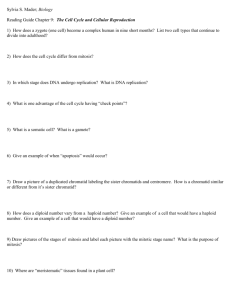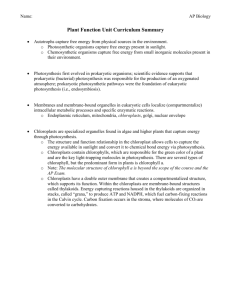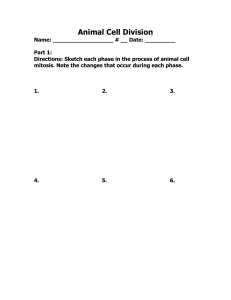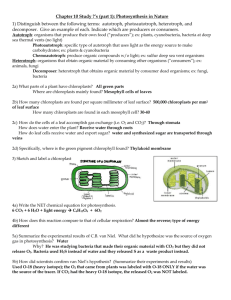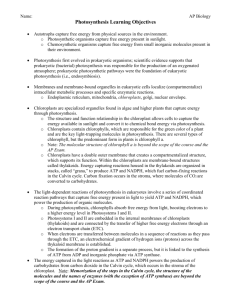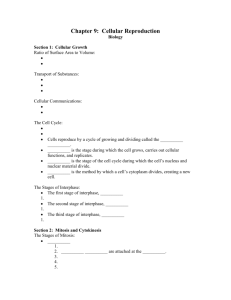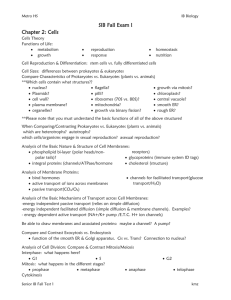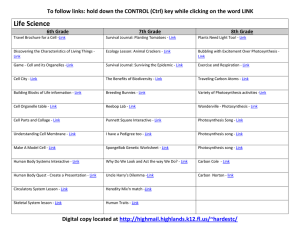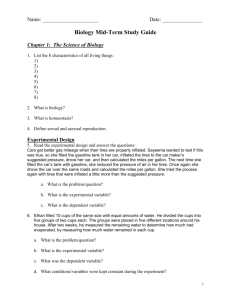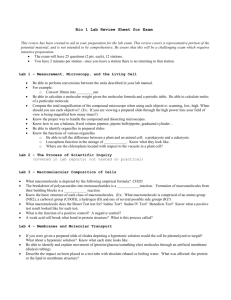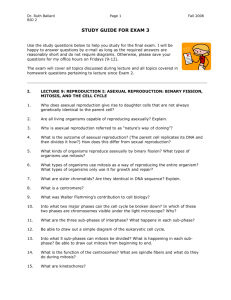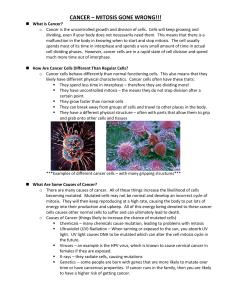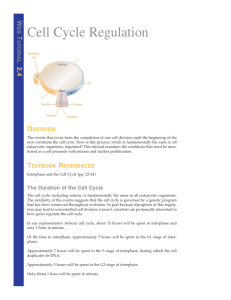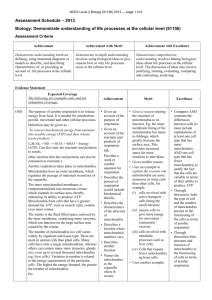Key Concepts Lectures 16-18
advertisement
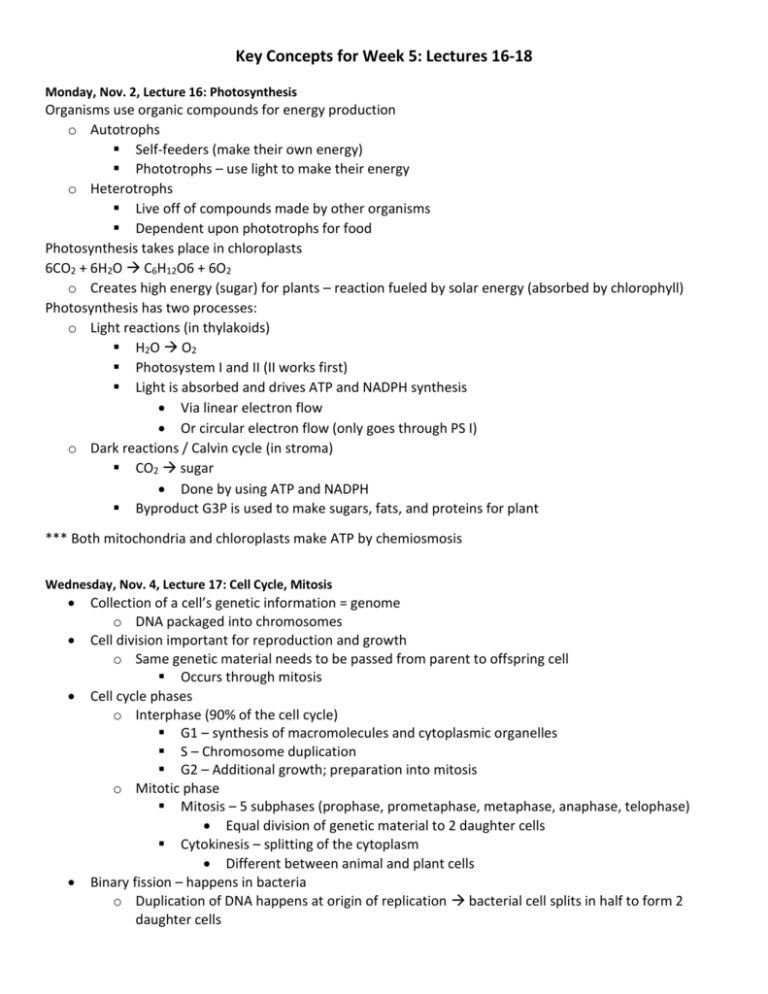
Key Concepts for Week 5: Lectures 16-18 Monday, Nov. 2, Lecture 16: Photosynthesis Organisms use organic compounds for energy production o Autotrophs Self-feeders (make their own energy) Phototrophs – use light to make their energy o Heterotrophs Live off of compounds made by other organisms Dependent upon phototrophs for food Photosynthesis takes place in chloroplasts 6CO2 + 6H2O C6H12O6 + 6O2 o Creates high energy (sugar) for plants – reaction fueled by solar energy (absorbed by chlorophyll) Photosynthesis has two processes: o Light reactions (in thylakoids) H2O O2 Photosystem I and II (II works first) Light is absorbed and drives ATP and NADPH synthesis Via linear electron flow Or circular electron flow (only goes through PS I) o Dark reactions / Calvin cycle (in stroma) CO2 sugar Done by using ATP and NADPH Byproduct G3P is used to make sugars, fats, and proteins for plant *** Both mitochondria and chloroplasts make ATP by chemiosmosis Wednesday, Nov. 4, Lecture 17: Cell Cycle, Mitosis Collection of a cell’s genetic information = genome o DNA packaged into chromosomes Cell division important for reproduction and growth o Same genetic material needs to be passed from parent to offspring cell Occurs through mitosis Cell cycle phases o Interphase (90% of the cell cycle) G1 – synthesis of macromolecules and cytoplasmic organelles S – Chromosome duplication G2 – Additional growth; preparation into mitosis o Mitotic phase Mitosis – 5 subphases (prophase, prometaphase, metaphase, anaphase, telophase) Equal division of genetic material to 2 daughter cells Cytokinesis – splitting of the cytoplasm Different between animal and plant cells Binary fission – happens in bacteria o Duplication of DNA happens at origin of replication bacterial cell splits in half to form 2 daughter cells Friday, Nov. 6, Lecture 18: Cell Cycle Regulation, Cancer Checkpoints at different stages of cell cycle help to regulate cycle (stop and go signals) Regulatory molecules: o Protein kinases and cyclins – give the OK during interphase (G1 and G2 checkpoints) If cell receives OK from regulatory molecules at G1, it continues on with cell cycle If cell does not get the OK, cell exits to G0 phase, a non-dividing state Some cells can go from G0 back into cell cycle by growth factors Internal / external cues to regulate cell cycle o Growth factors o Density dependent inhibition o Anchorage dependence Cells that have defects in their cell cycle regulation = tumor cells o Don’t exhibit anchorage dependence or density dependent inhibition o Progression of a cancer cell Transformation of normal cell to a cancerous cell Benign tumor Malignant tumor (able to spread to new areas and impair function of different organs)



